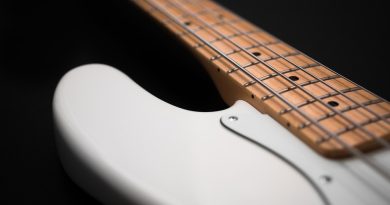Master the Strings: A Beginner’s Guide to Playing Classical Guitar
Master the Strings: A Beginner’s Guide to Playing Classical Guitar
Classical guitar has a rich history and is known for its beautiful and intricate melodies. If you’ve ever wanted to learn how to play this timeless instrument, you’re in luck! In this beginner’s guide, we’ll cover everything you need to know to get started on your journey to mastering the strings of the classical guitar.
Choosing the Right Guitar
The first step in learning how to play classical guitar is choosing the right instrument. Classical guitars differ from acoustic and electric guitars in their construction and sound. When selecting a classical guitar, it’s important to look for one with nylon strings, a wider neck, and a slimmer body. These features will give you the best playing experience and produce the warm, rich tones that are characteristic of classical guitar music.
Learning the Basics
Before you can start playing your favorite classical pieces, you’ll need to learn the basics of classical guitar technique. This includes proper hand positioning, finger placement, and posture. To achieve the best sound and avoid injury, it’s essential to practice good technique from the beginning.
One of the most important aspects of classical guitar technique is fingerpicking. Unlike strumming with a pick, classical guitarists use their fingertips to pluck the strings. This technique allows for greater control and precision when playing intricate melodies and arpeggios.
Building Finger Strength
Playing classical guitar requires strong and nimble fingers. To build up your finger strength, it’s important to practice regularly and incorporate exercises into your practice routine. One of the most popular exercises for classical guitarists is the “spider” exercise, which involves playing a series of notes up and down the fretboard using different finger combinations. This exercise will help you develop dexterity and coordination in your fingers.
Learning Scales and Chords
Scales and chords are the building blocks of music, and mastering them is essential for any aspiring guitarist. In classical guitar, scales are used to warm up the fingers and improve technique, while chords are used to create harmonies and melodies. Learning a variety of scales and chords will expand your musical vocabulary and give you the tools to play a wide range of classical pieces.
Practicing Proper Posture
Proper posture is crucial for playing classical guitar effectively. A good posture will help prevent tension and strain in your hands and arms, allowing you to play for longer periods of time without fatigue. When sitting with your guitar, make sure to keep your back straight, shoulders relaxed, and guitar positioned at a comfortable angle. Maintaining proper posture will not only improve your playing but also prevent injury in the long run.
Studying Classical Repertoire
One of the best ways to improve as a classical guitarist is to study and learn from the masters. There is a vast repertoire of classical guitar music to explore, ranging from traditional Spanish pieces to modern compositions. By listening to and learning from the works of renowned classical guitarists such as Andres Segovia, John Williams, and Julian Bream, you can gain valuable insight into the nuances of classical guitar music and develop your own unique style.
Taking Lessons
While it’s possible to teach yourself how to play classical guitar, taking lessons from a qualified instructor can greatly accelerate your progress. A good teacher can provide personalized guidance, feedback, and instruction tailored to your individual needs and goals. Additionally, studying with a teacher can help you develop good habits, avoid common mistakes, and stay motivated on your musical journey.
Conclusion
Playing classical guitar is a rewarding and fulfilling pursuit that offers countless opportunities for growth and creativity. By following the tips and guidelines outlined in this beginner’s guide, you can start your journey to mastering the strings of the classical guitar with confidence and enthusiasm. Remember to practice regularly, study the fundamentals, and seek guidance from experienced players to unlock your full potential as a classical guitarist. With dedication and perseverance, you can achieve your musical goals and become a skilled player of this timeless and beautiful instrument.






